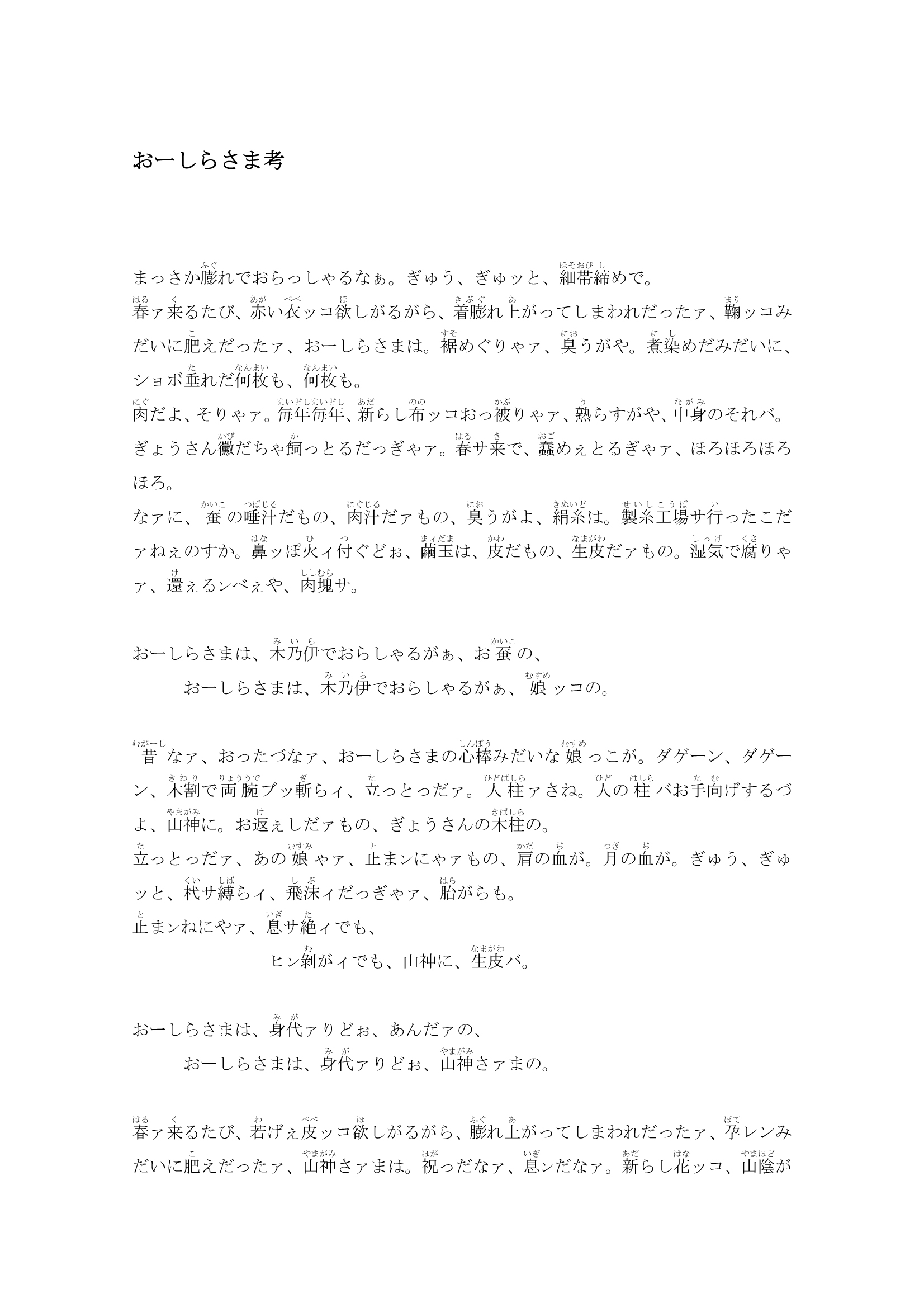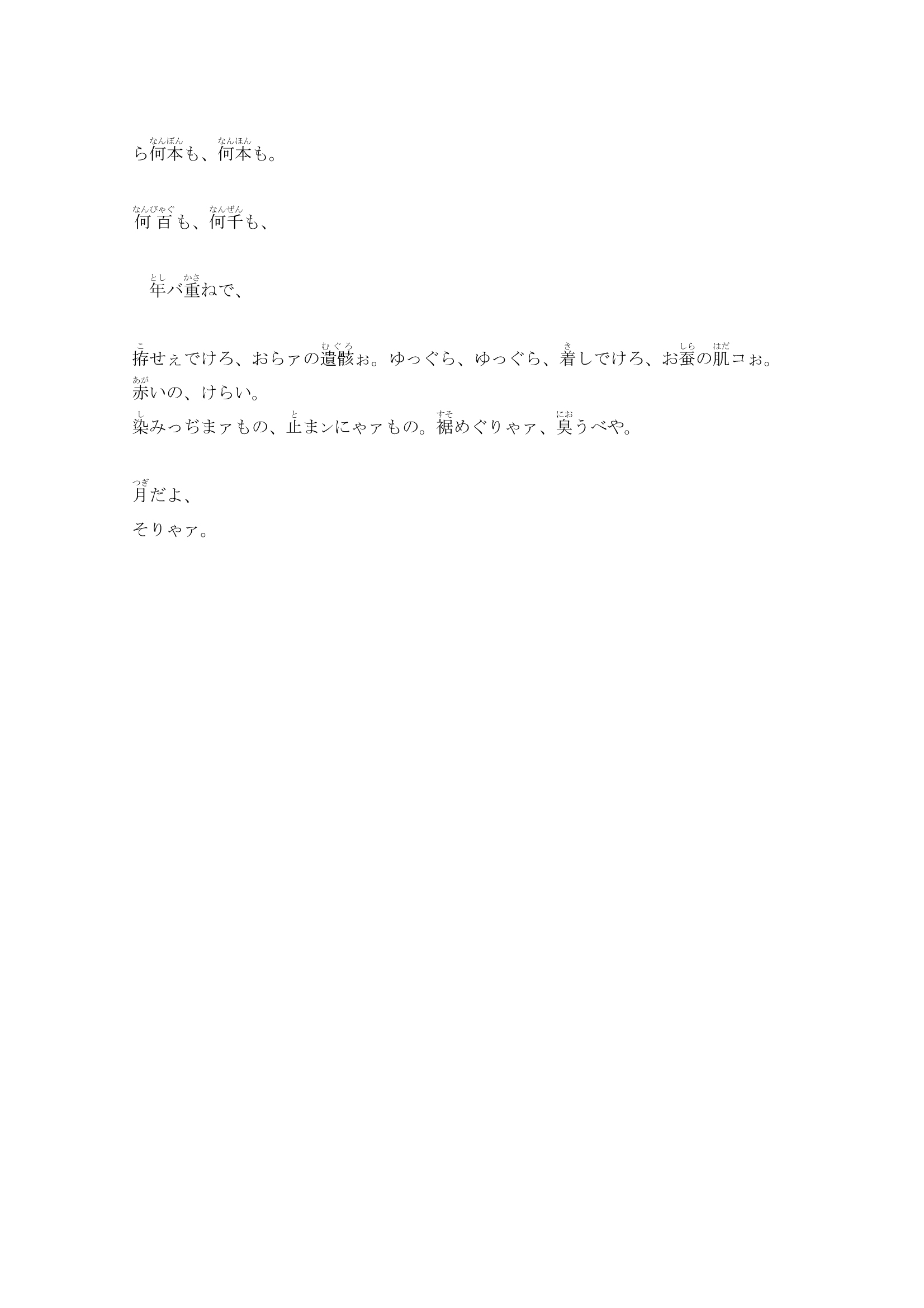Dollogy
Oh! You’re even rounder than I expected. Cinched in by a skinny belt.
Every spring you need a new red dress, so now you’re fat with layers, a bundled-up ball. Girl-doll1. What a stink when your hem’s picked up—as if those layers were stewed in soy for days. Layers, layers fraying, then more layers.
Fresh layers every year. You put on new ones as the ones inside mature. And there inside you tend your many moulds. In spring they wriggle, teem, and like blossoms fall away.
Well, it all makes sense—the silk threads are both the spit of the worms and their boiled-up flesh, so of course they stink. You’ve been to the silk mill, right? The stench burns your nostrils because the cocoons are peeled skin. And so these layers, rotten with damp, turn back to flesh.
Of course. Girl-dolls are the mummies of silk worms.
Of course. Girl-dolls are the mummies of young girls.
Once there was a girl like a girl-doll pole—whack, whack!—standing, with arms chopped off. Human sacrifice, yes? The human pole offered to the mountain goddess. We give thanks for all the wood that we’re given, of course!
Standing, she can’t stop the flow of blood from her shoulders. Moon-blood. She’s cinched to the pole and it splashes, even from her womb.
And can’t stop, even after her last breath is gone,
even after the goddess has stripped her skin.
Girl-doll is standing in for you.
Girl-doll is standing in for the mountain goddess.
Every spring you need new skin, so now you’re plump with life. Goddess.
Celebrating the breath-push. Blossoms, then more blossoms from within your mountain gorge. For hundreds of years, thousands of years
layering age—
Please, please make a corpse for me, slowly, slowly put the skins on
give me red ones
because I’ll dye them, because I can’t stop. Of course it stinks when you lift these layers.
That’s
the moon.


- The Japanese word used here is Oshirasama, the name of a doll or idol made by layering pieces of silk over a stick as part of a Tohoku regional village ritual. Girls and women add fabric to the figure annually in tribute to the goddess manifest in the dolls. In some parts of Japan Oshirasama appears as the female half of a male-female pair of dolls, or as one of a set of several dolls. ↩









